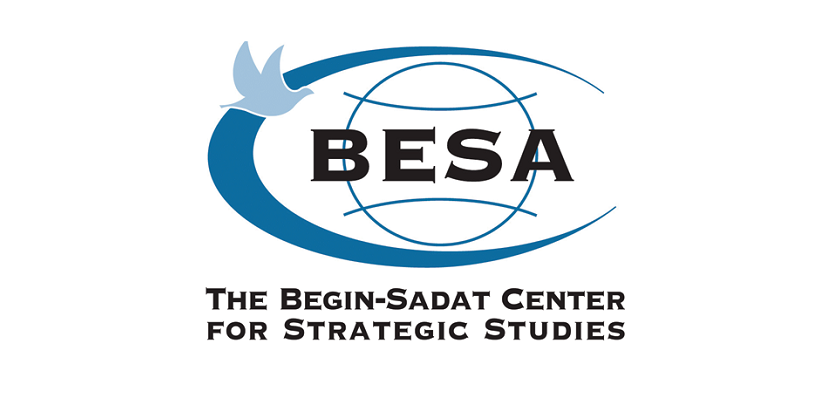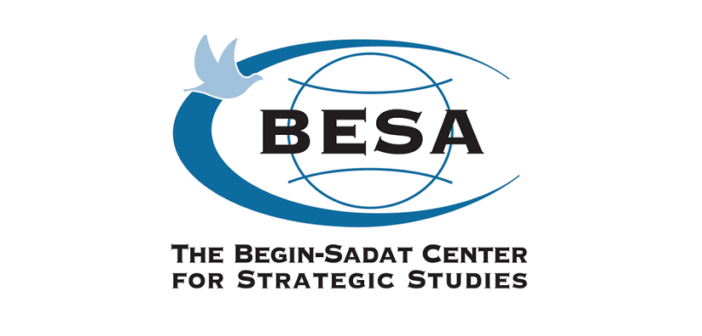
BESA Center Perspectives Paper No. 1,639, July 12, 2020
By Emil Avdaliani July 12, 2020
EXECUTIVE SUMMARY: The world is witnessing the rise of a new geopolitical concept: the Indo-Pacific. The shift of American attention toward the Indo-Pacific could create more room for maneuver for Russia and Iran in their respective neighborhoods over the long term.
The world is in flux. Global geopolitical trends that existed before the onset of the coronavirus will only intensify in its wake, and US-China competition will become more pronounced across the Eurasian landmass.
The major struggle will play out in the newly emerging Indo-Pacific region. Though this geographic concept only recently replaced the outdated Asia-Pacific vision, it has surfaced from time to time in the writing and speeches of past political thinkers and politicians.
The Indo-Pacific region refers to the confluence of the Pacific and Indian Oceans, which interconnect in Southeast Asia. Beijing is opposed to the Indo-Pacific concept as it views it as the product of American efforts to contain its own rising economic and military capabilities. Many believe the emergence of this new concept is indeed a matter of cold-blooded, Cold War-style geopolitical thinking.
That is a misreading. The shift from the Asia-Pacific to the Indo-Pacific is not just a matter of realpolitik. It reflects tectonic geopolitical shifts that have occurred in the world over the past two decades or so.
A primary motor behind this change is exponential economic growth ranging from India to China and Japan. The entire Indo-Pacific rim of island states, larger countries like Vietnam and South Korea, and the Indian and Chinese giants have become economically interconnected and now represent the world’s biggest trade markets. Several studies show that at least 50% of global GDP will be shared by the Indo-Pacific region.
Another tectonic development is China’s rise. Through its near-trillion-dollar Belt and Road Initiative (BRI), it has expanded its economic (and, some argue, military) foothold in the Indian Ocean. Though the Chinese might disagree with the emergence of the Indo-Pacific concept, it was their economic ambition that showed how the two oceans are economically and militarily inseparable.
A bit of history helps prove this point. Consider Marco Polo, the famous Venetian traveler, and his trip to China in the thirteenth century. On his way home, Polo traveled through Southeast Asia, the Indian Ocean, and the Persian Gulf. He provided a detailed portrait of the broad web of trade relations that existed between Chinese mainland ports and cities in modern day Indonesia, India, and along the Persian Gulf. Chinese products reached east African shores in what are today Somalia and Eritrea as well as other neighboring territories.
China’s geography always propels it to seek an outlet to the Indian Ocean when it wishes to pursue economic and military expansion. With mountains, steppes, and deserts to the west and northwest, the only natural highway for China’s expansion is Southeast Asia and the Indian Ocean. This was the case in Marco Polo’s time and it is still true today.
Another example proving this premise was Chinese mariner Zheng He, who traveled into the Indian Ocean in the early fifteenth century in an attempt to establish a long-term Chinese presence there.
The Indian and Pacific Oceans are thus very much interlinked. Japan’s expansion during WWII showed a military trajectory toward Southeast Asia and further into the Indian Ocean.
Historical context and geography aside, the emergence—or rather re-emergence—of the Indo-Pacific concept is underpinned by today’s closer India-Japan relations. Both countries neighbor China and are worried about how far Chinese power can extend. Both see the need to cooperate on military and economic matters and to try to entice Australia and get stronger US support. A kind of quadrilateral format is emerging, perhaps even some version of a long-term strategy toward the region and specifically China.
There is one caveat to bear in mind when evaluating this new geopolitical concept. To cast it as a new containment policy would not bring much of a result. China should be engaged, not simply cut off from the Indian Ocean. Were China more like the former Soviet Union—that is, only a powerful military player—then containment would be a sensible approach. But because China is an integral part of the world economy and especially critical to the Indo-Pacific region, containment would likely fail to bring about the same results it achieved in the Cold War era.
An interesting twist might take place even in the Chinese vision. Accepting the Indo-Pacific region might be an inescapable geopolitical development. In fact, abandoning the Asia-Pacific concept could allow China to better justify its deep involvement in the Indian Ocean, which is so much feared by India and other states.
The emergence of the Indo-Pacific region will have wider repercussions as well. Global trade and a subsequent growth in China’s military presence at the confluence of the two oceans will shift American and European attention away from the depths of Eurasia and the possibility of a confrontation with Russia toward China.
The US will need to bolster its presence in the region by building deeper cooperation platforms with India, Japan, and Australia. This will have to involve attracting large-scale investment. The US will not be able to match the economic potential of China’s BRI, but together with its allies it could set up mechanisms for open investment programs that could provide a striking contrast to Chinese investment models.
The US should act in the emerging Indo-Pacific realm similarly to the way the UK acted from the eighteenth century until WWII. Recognizing that its real strength was as a sea power, the British worked hard to prevent the emergence of a dominant European power on the continent. It accomplished this by building a variety of military coalitions. The British also understood the limits of their human resources, which prompted them to seek help from other continental powers and maintain constant engagement with all European states.
The US now faces similar constraints when it comes to China. Washington needs India, Japan, and Australia first and foremost, as well as smaller states like South Korea, Vietnam, and Indonesia, to balance China.
The shift of American attention from inner Eurasia to the Indo-Pacific region will accelerate in the 2020s. This will benefit Russia, as it will have a much freer hand in dealing with its immediate neighborhood. It should also result in a further delay of NATO/EU expansion, which works to Moscow’s benefit.
The emergence of the Indo-Pacific region should also benefit Iran, as it has been under immense US pressure ever since the invasion of Afghanistan and Iraq in early 2000s. The rise of the Indo-Pacific region could mean Iran has more room to maneuver in Iraq and the Persian Gulf.
The Indo-Pacific region is already a geopolitical constant. It connects large swaths of the globe into one unit. The region has the largest and wealthiest states in the world and will attract the US and other global players. It is on the way to becoming a major playground for geopolitical influence.
About the author
Emil Avdaliani teaches history and international relations at Tbilisi State University and Ilia State University. He has worked for various international consulting companies and currently publishes articles on military and political developments across the former Soviet space.






